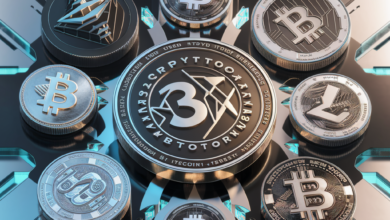
SHIB: The Rise, Fall, and Future of the Dogecoin Killer
Introduction
In the ever-evolving world of cryptocurrency, few tokens have captured the public’s imagination quite like SHIB, also known as Shiba Inu. What began as a playful meme coin dubbed the “Dogecoin Killer” quickly transformed into a serious contender in the decentralized finance (DeFi) space. With its vibrant community, ambitious ecosystem, and wild price volatility, SHIB has become one of the most talked-about cryptocurrencies of the past few years. But how did a token featuring a Shiba Inu dog mascot rise to such prominence? What drives its value, and can it sustain long-term growth? This comprehensive 5,000-word article explores SHIB’s origins, its explosive growth, the technology behind it, and whether it has what it takes to survive in an increasingly competitive crypto market.
1. The Origins of SHIB: From Meme to Movement
The story of SHIB begins in August 2020, when an anonymous developer or group under the pseudonym “Ryoshi” launched the token as an experiment in decentralized community building. Inspired by Dogecoin’s success, SHIB was designed to be a more scalable and functional alternative while maintaining the same lighthearted, meme-driven appeal. Unlike Bitcoin or Ethereum, which were created with serious technological ambitions, SHIB embraced its identity as a fun, community-driven project at least in its early days.
One of SHIB’s most distinctive features was its massive total supply one quadrillion tokens with half of them “locked” in Uniswap to provide liquidity and the other half sent to Ethereum co-founder Vitalik Buterin as a publicity stunt. This move, intended to demonstrate decentralization, took an unexpected turn when Buterin donated a significant portion of his SHIB to COVID-19 relief efforts in India and burned the rest, effectively removing billions of dollars worth of SHIB from circulation. This act of goodwill brought SHIB into the mainstream spotlight, proving that even a meme coin could have real-world impact.
2. The Meteoric Rise: How SHIB Became a Billion-Dollar Asset
Few cryptocurrencies have experienced a rise as dramatic as SHIB’s. After months of obscurity, the token gained traction in early 2021, fueled by social media hype, celebrity endorsements (including tweets from Elon Musk), and the broader meme coin frenzy. By May 2021, SHIB’s price had surged by over 46,000,000%, turning early investors into overnight millionaires and attracting a flood of new buyers hoping to catch the next big wave.
A key factor in SHIB’s rapid ascent was its community-driven approach. Unlike traditional cryptocurrencies, which rely on institutional investors, SHIB’s growth was powered almost entirely by retail traders and online communities like r/SHIBArmy on Reddit. The token’s affordability priced at a fraction of a cent—made it accessible to small investors, further fueling its popularity. Exchanges like Binance and Coinbase eventually listed SHIB, providing legitimacy and liquidity, while decentralized platforms like ShibaSwap allowed users to stake, trade, and earn rewards within the ecosystem.
However, SHIB’s volatility also made it a high-risk asset. After peaking in October 2021, its value experienced sharp corrections, leaving latecomers with significant losses. This boom-and-bust cycle raised questions about whether SHIB was a legitimate investment or just another speculative bubble.
3. The SHIB Ecosystem: More Than Just a Meme Coin?
What sets SHIB apart from other meme coins is its expanding ecosystem, which goes beyond simple token trading. The project’s developers have introduced several key components to add utility and long-term viability:
-
ShibaSwap: A decentralized exchange (DEX) where users can swap tokens, provide liquidity, and earn passive income through staking.
-
LEASH & BONE: Complementary tokens within the SHIB ecosystem, each serving different purposes (governance, rewards, etc.).
-
Shibarium: A Layer-2 blockchain solution designed to reduce Ethereum gas fees and improve transaction speeds for SHIB-based projects.
-
NFTs & Metaverse Plans: The team has ventured into digital collectibles and virtual land projects, aiming to capitalize on Web3 trends.
These developments suggest that SHIB is attempting to transition from a meme coin to a multi-functional DeFi platform. However, whether these efforts will succeed in creating sustained value remains uncertain, as competition from established blockchains like Ethereum and Solana is fierce.
4. The Challenges: Volatility, Competition, and Skepticism
Despite its successes, SHIB faces significant hurdles. Its price remains highly speculative, with fluctuations driven more by social media trends than fundamental value. Regulatory scrutiny around meme coins is increasing, and many traditional investors still view SHIB as a high-risk gamble rather than a serious asset.
Additionally, the broader crypto market’s instability such as the 2022 crash—has impacted SHIB’s price, demonstrating its vulnerability to macroeconomic factors. The project must also contend with scaling issues, as high Ethereum gas fees can deter small investors from using ShibaSwap or other SHIB-based applications.
Perhaps the biggest challenge is proving real-world utility. While Bitcoin is seen as digital gold and Ethereum as a platform for smart contracts, SHIB must demonstrate that its ecosystem offers something unique beyond hype and community enthusiasm.
5. The Future of SHIB: Can It Survive Long-Term?
The question on every investor’s mind is: Does SHIB have a future? Several factors will determine its longevity:
-
Adoption of Shibarium: If successful, this Layer-2 solution could make SHIB-based transactions faster and cheaper, attracting more users.
-
Mainstream Partnerships: Collaborations with businesses (e.g., AMC accepting SHIB payments) could increase real-world use cases.
-
Community Strength: The SHIBArmy remains one of the most dedicated in crypto, but sustaining engagement during bear markets is crucial.
-
Regulatory Landscape: Favorable regulations could help, while harsh restrictions could hinder growth.
While SHIB may never replace Ethereum or Bitcoin, it could carve out a niche as a community-powered DeFi token with unique cultural appeal. Its fate hinges on whether it can evolve beyond meme status into a project with lasting technological and economic value.
Frequently Asked Questions (FAQ)
Q: Is SHIB a good investment?
A: SHIB is highly speculative. While it has made some investors rich, its volatility makes it risky. Only invest what you can afford to lose.
Q: What’s the difference between SHIB, LEASH, and BONE?
A: SHIB is the main currency, LEASH is a scarce token with governance perks, and BONE is used for voting and rewards in ShibaSwap.
Q: How does Shibarium improve SHIB’s usability?
A: By reducing Ethereum’s high fees and speeding up transactions, Shibarium could make SHIB more practical for everyday use.
Q: Can SHIB reach $1?
A: Extremely unlikely due to its massive supply. Even reaching $0.01 would require unprecedented demand and token burns.
Q: Who controls the SHIB project?
A: It remains decentralized, though a core team oversees development. The community plays a major role in governance.
Conclusion
SHIB’s journey from a joke cryptocurrency to a multi-billion-dollar phenomenon is a testament to the power of internet culture and decentralized finance. While its long-term viability is still uncertain, one thing is clear: SHIB has already left an indelible mark on the crypto world. Whether it fades into obscurity or evolves into a lasting project will depend on its ability to innovate, adapt, and prove that it’s more than just a meme. For now, the SHIBArmy continues to believe and in the unpredictable world of crypto, anything is possible.



